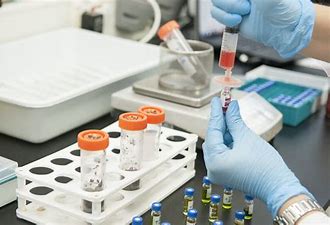This has been taken from the website called Not Milk. I have broken the letter up as it’s quite long and very rich in terms of what we need to know. Small doses may help in terms of taking it in. Thus I’m going to produce a series of posts based on this letter. Watch this space 🙂
Well, at least cow’s milk is pure.
Or is it? Fifty years ago an average cow produced 2,000 pounds of milk per year. Today the top producers give 50,000 pounds! How was this accomplished? Drugs, antibiotics, hormones, forced feeding plans and specialized breeding; that’s how.
The latest high-tech onslaught on the poor cow is bovine growth hormone or BGH. This genetically engineered drug is supposed to stimulate milk production but, according to Monsanto, the hormone’s manufacturer, does not affect the milk or meat. There are three other manufacturers: Upjohn,
Eli Lilly, and American Cyanamid Company. Obviously, there have been no long-term studies on the hormone’s effect on the humans drinking the milk. Other countries have banned BGH because of safety concerns. One of the problems with adding molecules to a milk cows’ body is that the molecules usually come out in the milk. I don’t know how you feel, but I don’t want to experiment with the ingestion of a growth hormone. A related problem is that it causes a marked increase (50 to 70 per cent) in mastitis. This, then, requires antibiotic therapy, and the residues of the antibiotics appear in the milk. It seems that the public is uneasy about this product and in one survey 43 per cent felt that growth hormone treated milk represented a health risk.
A vice president for public policy at Monsanto was opposed to labelling for that reason, and because the labelling would create an ‘artificial distinction’. The country is awash with milk as it is, we produce more milk than we can consume. Let’s not create storage costs and further taxpayer burdens, because the law requires the USDA to buy any surplus of butter, cheese, or non-fat dry milk at a support price set by Congress! In fiscal 1991, the USDA spent $757 million on surplus butter, and one billion dollars a year on average for price supports during the 1980s (Consumer Reports, May 1992: 330-32).
Any lactating mammal excretes toxins through her milk. This includes antibiotics, pesticides, chemicals and hormones. Also, all cows’ milk contains blood! The inspectors are simply asked to keep it under certain limits. You may be horrified to learn that the USDA allows milk to contain from one to one and a half million white blood cells per millilitre. (That’s only 1/30 of an ounce). If you don’t already know this, I’m sorry to tell you that another way to describe white cells where they don’t belong would be to call them pus cells. To get to the point, is milk pure or is it a chemical, biological, and bacterial cocktail? Finally, will the Food and Drug Administration (FDA) protect you? The United States General Accounting Office (GAO) tells us that the FDA and the individual States are failing to protect the public from drug residues in milk. Authorities test for only 4 of the 82 drugs in dairy cows.
As you can imagine, the Milk Industry Foundation’s spokesman claims it’s perfectly safe. Jerome Kozak says, “I still think that milk is the safest product we have.”
Other, perhaps less biased observers, have found the following: 38% of milk samples in 10 cities were contaminated with sulfa drugs or other antibiotics. (This from the Centre for Science in the Public Interest and The Wall Street Journal, Dec. 29, 1989)… A similar study in Washington, DC found a 20 percent contamination rate (Nutrition Action Health letter, April 1990).
What’s going on here? When the FDA tested milk, they found few problems. However, they used very lax standards. When they used the same criteria, the FDA data showed 51 percent of the milk samples showed drug traces.
Let’s focus in on this because it’s critical to our understanding of the apparent discrepancies. The FDA uses a disk-assay method that can detect only 2 of the 30 or so drugs found in milk. Also, the test detects only at the relatively high level. A more powerful test called the ‘Charm II test’ can detect drugs down to 5 parts per billion.
One nasty subject must be discussed. It seems that cows are forever getting infections around the udder that require ointments and antibiotics. An article from France tells us that when a cow receives penicillin, that penicillin appears in the milk for from 4 to 7 milkings. Another study from the University of Nevada, Reno tells of cells in ‘mastic milk’, milk from cows with infected udders. An elaborate analysis of the cell fragments, employing cell cultures, flow cytometric analysis, and a great deal of high tech stuff. Do you know what the conclusion was? If the cow has mastitis, there is pus in the milk. Sorry, it’s in the study, all concealed with language such as “macrophages containing many vacuoles and phagocytised particles,” etc.
Read more about this in future blog posts. They wont have huge gaps between them so it wont be long. If you don’t want to keep checking this website, sign up here and receive notifications about new posts.



1 Comment
Heena Modi · September 18, 2008 at 5:45 pm
So if conventional milk isn’t good for us should we go organic? Is it a better option?
Here’s what the Ethical Consumer says about organic alternatives: –
http://www.ethicalconsumer.org/FreeBuyersGuides/fooddrink/yoghurtdairysoya.aspx)
Soil Association certified products are better for the environment and for the consumer in terms of avoiding much of the antibiotics, hormones and GM feed used in conventional milk production. But do they offer a better deal for the cows?
There are no guidelines for the length of time organic dairy cows may be housed indoors, but completely indoor systems are prohibited. Highly invasive practices such as embryo transfer are forbidden but artificial insemination is allowed. Fertility hormones are prohibited for synchronising calving but not for bringing an infertile cow into heat. Calves must be group housed after seven days old. Castration with a rubber ring is allowed within the first week of life. Disbudding (permanently preventing horn growth by applying a hot iron to the horn-forming tissue) is allowed up to 3 months. Calves can’t be taken to market under one month old, but after this, eight hour journeys are allowed. Organic cows are still impregnated each year to provide a continuous supply of milk and separated from their calves within 24-72 hours of birth. The scheme also allows unwanted calves to be killed soon after birth (1).
References
1 The Dark Side of Dairy, a Viva! Report by Toni Vernelli BSc Animal Biology and Conservation, 2005
2 Wrecking The Planet, Joni Seager, The State of The Environment Atlas, Penguin Books, 1995
3 Physicians Committee for Responsible Medicine http://www.pcrm.org, viewed on 21/10/05
4 http://www.food.gov.uk, viewed on 4/11/05
5 http://www.viva.org.uk, viewed on 4/11/05
6 http://www.purifymind.com/Hippo, viewed on 4/11/05
7 Corporate Watch newsletter: issue 24, June/July 05
8 Breaking the Rules, International Baby Food Action Network, 2004
9 http://www.itfglobal.org, viewed on 8/11/05 10 Earth Island Journal: Winter 2002/Vol17
11 Responsible Shopper website: Dean Foods viewed on 02/02/05
12 Ethical Consumer: 85 October/November 2003
13 Who Owns Whom: 2003/2004
14 The Ecologist: May 2003
15 The Ecologist: December 2004
16 Companies that test on animals, PETA, July 2004
17Breaking the Rules: 2004
18 Corporate Watch newsletter: issue 22, Feb/March 2005
19 BUAV Factsheet E3 Cosmetics Companies Guide, November 2004
20 Power Hungry – six reasons to regulate global food corporations: ActionAid report 2005
21 Ecolinks Boycott list – http://www.ecolinks.net, viewed on 25/02/03
22 http://www.oilpackers.com, viewed on 8/11/05
23 http://www.scconline.org, viewed on 11/10/05
24 Yeo Valley Group Corporate Communications: �Minimising Our Impact on the Environment’ 2005 < br>25 http://www.notmilk.com, viewed on 9/11/05
26 http://milk.elehost.com, viewed on 9/11/05
Is it really better ?
Comments are closed.